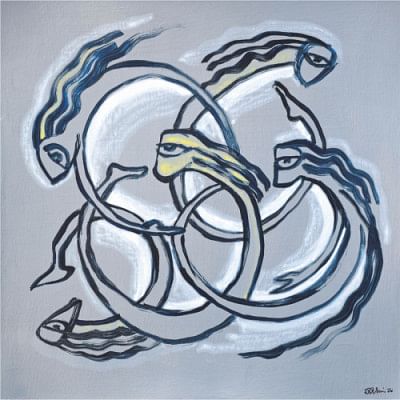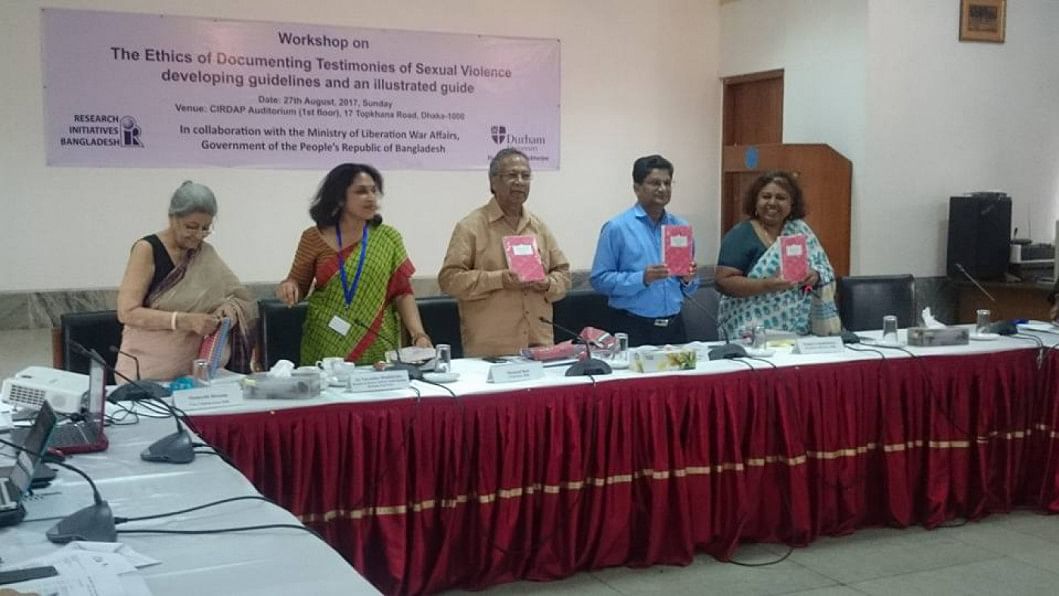Ethically representing narratives of birangonas

An estimated 200,000-400,000 women and girls were raped by the Pakistani army and their local Bengali collaborators during the Liberation War of Bangladesh. Six days after the war ended on December 16, 1971, women raped during the war were designated birangonas, war heroines, in an effort by the fledgling Bangladeshi government to recognise and honour them.
After being widely publicised in the immediate aftermath of the war, post-1975, the issue of wartime rape almost disappeared from public discourse for about two decades. Dr Nayanika Mookherjee, Reader in Socio-Cultural Anthropology at Durham University and author of “The Spectral Wound: Sexual Violence, Public Memories and the Bangladesh War of 1971”, writes that though reportage resumed in the 1990s, and testimonies were collected, the individual experiences of the birangonas themselves were missing from the narrative. Though there was not silence per se about the birangonas, their portrayal became generic—the picture of a traumatised woman, ostracised by society—as if wartime rape is experienced the same way by all survivors. The documentation process, in many cases, was ethically objectionable.
For instance, in 1992, three birangonas had appeared at an event in Enayetpur to demand the trial of local collaborator Ghulam Azam, which was widely publicised. This was the first time that birangonas had appeared in public to highlight the experiences of sexual violence during the war. But their presence served more as a symbol of wartime violence during 1971 (they were not asked to talk at the event)—they were photographed, and these were published, without their consent.
Oral histories are a powerful tool in building narratives of sexual violence faced by women during war and can be drawn on to make the political personal. However, as Mookherjee argues in her book, testimonies gathered at the time did not take into account the wishes or the nuanced life experiences of the birangonas, and ended up silencing them further.
The research findings of Mookherjee's book form the basis for a 16-point ethical guideline drawn up for researchers, activists and journalists to use when documenting testimonies of wartime sexual violence. This was a collaborative initiative of Research Initiatives, Bangladesh and Durham University. Over two workshops held in November 2016 and August 2017, various stakeholders such as researchers, journalists and documentary filmmakers collaborated to draft the guidelines in English and Bengali.
In Mookherjee's experience of collecting 1971 testimonies, survivors and their families often did not wish to share their wartime experiences right away, or at all. More often, survivors were more interested in talking about their post-1971 lives. “Even if what we think is going to be said, is not said, we still have to change our preconceived ideas to fit the testimonies the birangonas and their families give,” says Mookherjee. Instead of discounting their non-1971 testimony, researchers should prioritise issues important for the survivors themselves.
Life did go on after rape, thus the event alone does not define the birangona. Mookherjee, in her research, did not ask the birangonas what they had endured in 1971 because they themselves considered other issues more paramount, such as how people approached them afterwards and their lives after the war. Mookherjee also interviewed only those who had already spoken out in public, because they had come forward voluntarily.

Certain guidelines addressing more basic issues expected in journalism and research include ensuring enough time to set up a relationship with the survivors and their convenience in order for them to feel comfortable enough to share their experiences. Another would be asking consent before taking photographs and recording conversations. “Consent is not a one-time event, there should be constant consent,” emphasises Mookherjee. Even after speaking out, if birangonas and other victims of sexual violence choose to not say anything further or wish their names to be erased, their wishes need to be respected and complied with.
Survivors of sexual violence speaking out can lead to serious consequences in their families and communities. Mookherjee recounts the story of a birangona whose son had taken her [Mookherjee] to talk to his mother, saying she was willing to talk about her 1971 experiences. On meeting her, Mookherjee found out that the birangona did not wish to talk because her younger son, the breadwinner of the family, was against her getting on a 'stage' to give a testimony and would deny her food. So, conducting a risk assessment, especially of the context surrounding the survivor, is important. In this particular case, Mookherjee asked forgiveness and left immediately as the mother asked, before her younger son saw her.
For researchers, it is imperative to ensure that their subjects do not come to any harm as a result of their work. This is pointed out by rights activist and vice-chairperson of Research Initiatives, Bangladesh, Hameeda Hossain, “Birangonas may not be satisfied afterwards with the reporting of their life's story; care should be taken that publishing their experiences does not have negative impact on their lives.”
Another point of the guideline addresses the crucial problem of giving false hopes to the survivors. After that first event in Enayetpur in 1992 where birangonas were publicly 'revealed', many visited these women or took them to Dhaka for recounting their 1971 testimonies. Assurances of jobs and medical treatment later remained unfulfilled. What Mookherjee found was that as a result, birangonas and their families were subject to khota, or scorn, from their communities. In their own words, birangonas described the change in their treatment in Dhaka, where they were accorded respect in the form of being given chairs to sit on, to how back in their village, these chairs were figuratively taken away and they were subject to khota.
“Villagers do not scorn birangonas because they were raped; they acknowledge that anyone could have been subject to it at the time and many even witnessed these. But they did not understand the need of these women to speak out when punishment of the perpetrators is no longer possible,” says Mookherjee. Thus, scorn was attributed due to perceived motives of financial gain and publicity.
A subsequent point addresses the importance of presenting an accurate narrative. “In falsely portraying the horrors in particular, the actual stories of the everyday lives of the birangonas are lost,” says Mookherjee. Portraying the birangonas as traumatised victims, rejected by their families and communities, may not always be the case and serves only “to simplify and erase the complex experiences of the raped women” (Nayanika Mookherjee for Himal Southasian, Nov 2015).
With birangonas now accorded the same status as freedom fighters, and conversations initiated through research and journalism about the issue of wartime rape, this guideline can prove to be an important tool for those documenting testimonies of survivors of sexual violence.

 For all latest news, follow The Daily Star's Google News channel.
For all latest news, follow The Daily Star's Google News channel. 



Comments